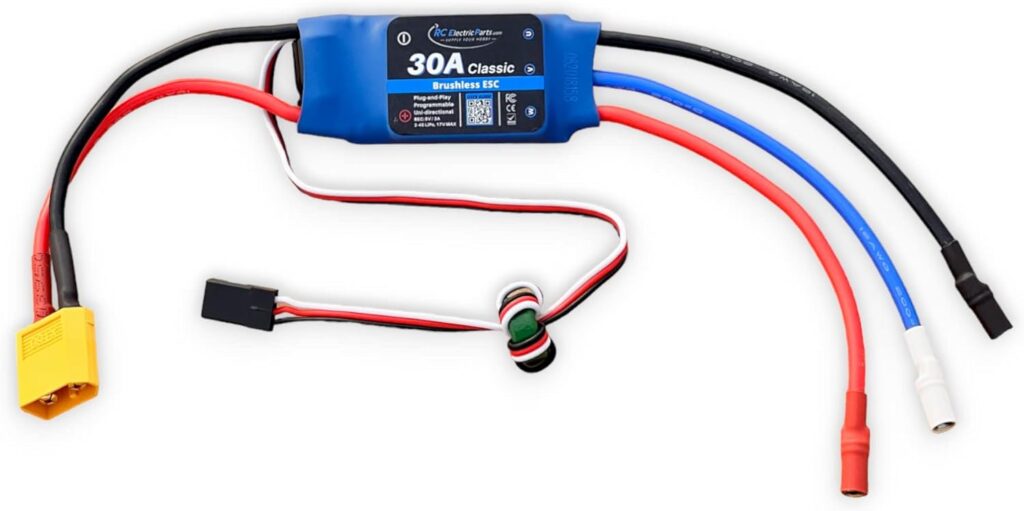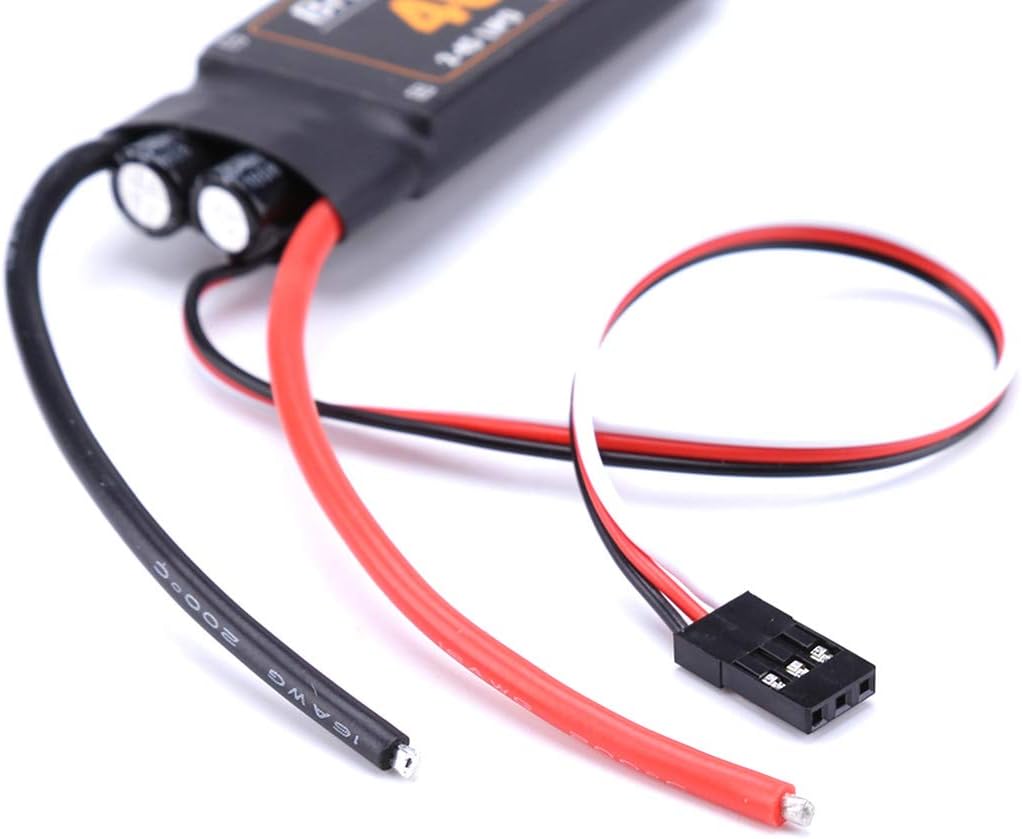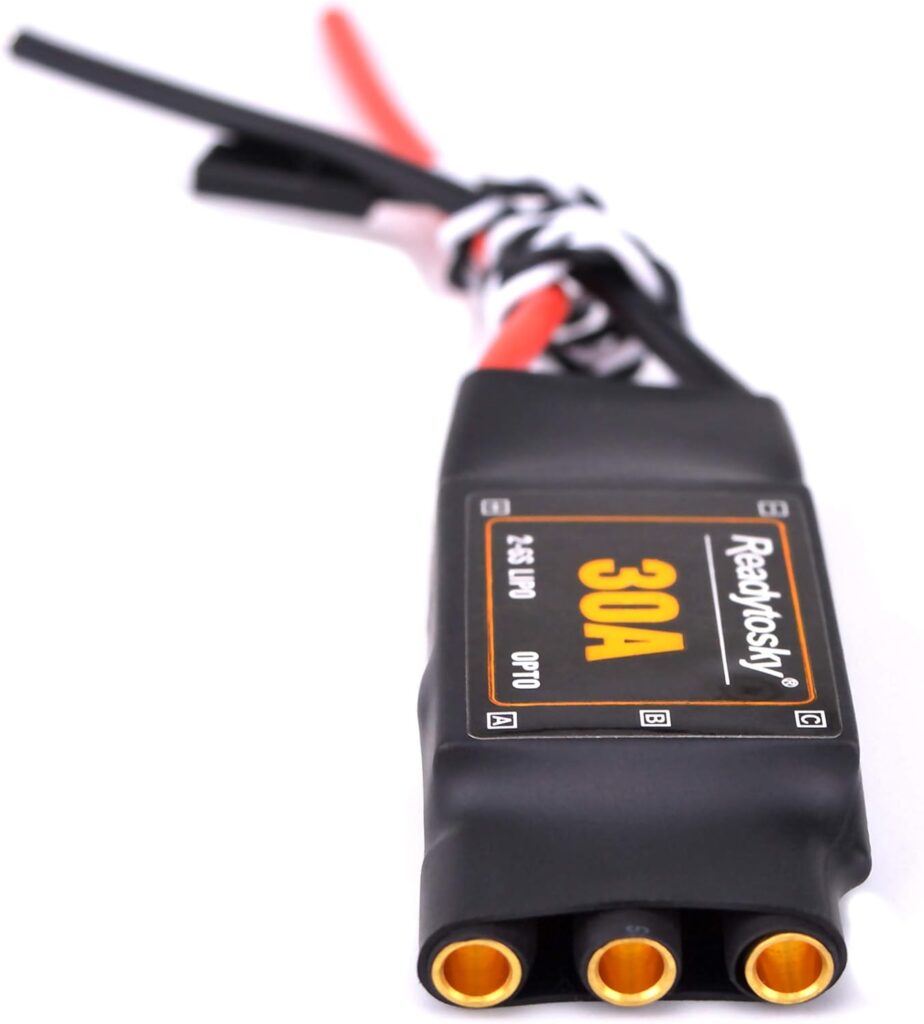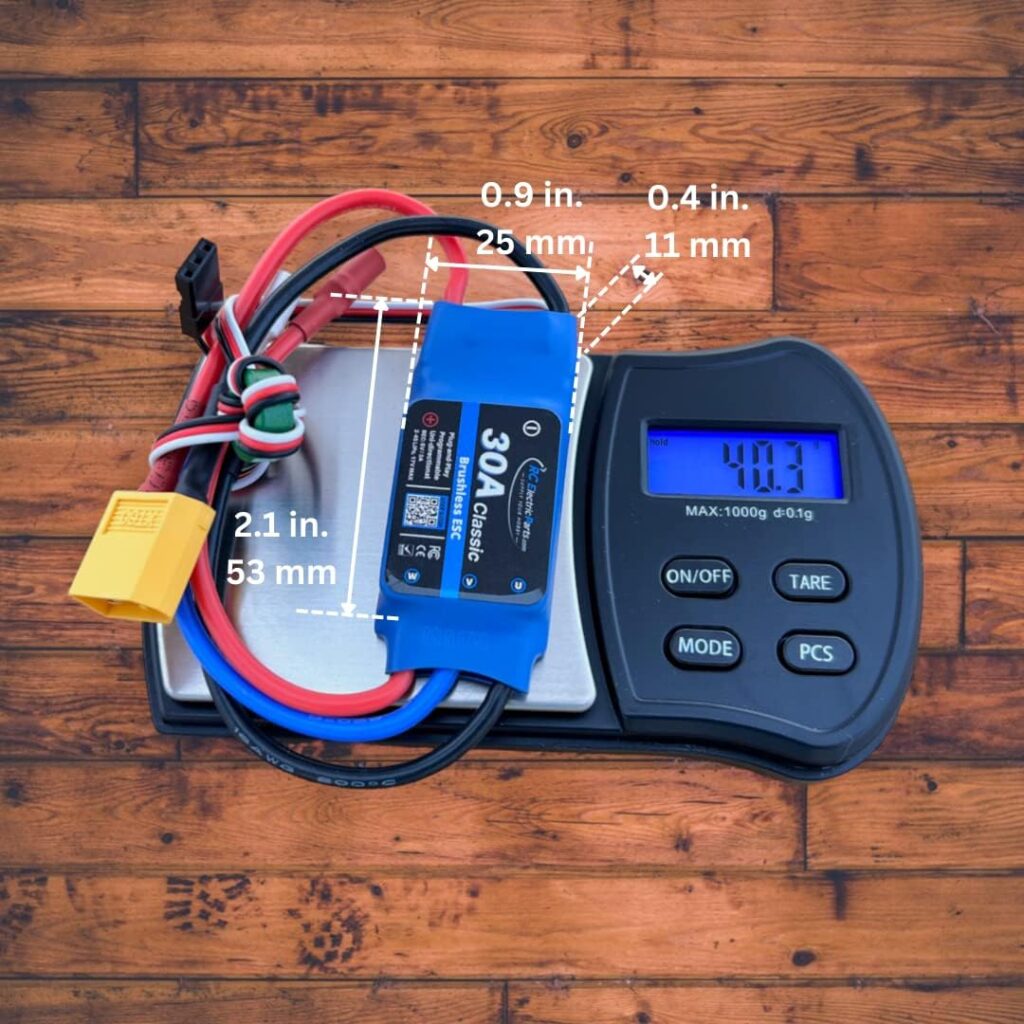An ESC, short for electronic speed controller, is an essential component in many electric radio-controlled vehicles. But what exactly is an ESC, and why is it needed? In short, an ESC acts as an electronic throttle by regulating power from the battery to the electric motor, allowing users to vary motor speed remotely. The ESC translates throttle signals from the radio receiver into adjustable power for the motor. Without an ESC, there would be no way to achieve variable speed control. In this guide, we’ll take a closer look at what ESCs are, how they work, the different types available, how to choose the right one, and more.
Definition of ESC
An ESC (electronic speed controller) is an electronic circuit used to control the speed of electric motors in radio-controlled vehicles such as rc cars, rc helicopters, rc airplanes, and rc boats. It acts as an intermediate between the R/C system and the motor. The ESC receives throttle signals from the R/C receiver and converts them into power delivered to the motor. This allows the user to regulate the speed of the motor remotely. ESCs use power transistors such as MOSFETs or IGBTs to vary the amount of power sent to the motor.
Purpose of an ESC
The main purpose of an ESC is to allow for adjustable motor speed control in battery-powered electric vehicles. Specifically, ESCs perform the following functions:
- Receive signals from the R/C transmitter and translate them into power delivered to the motor
- Smooth throttle input so speed changes are not abrupt
- Regulate proper levels of voltage and current provided to the motor
- Provide dynamic braking to bring the motor to a stop
- Protect the electrical system from damage due to overloads
So in summary, ESCs act as an electronic throttle for R/C vehicles by giving the user full control over motor speed and acceleration. This allows for smooth, variable speed operation.

How an ESC Works
1. Components of an ESC
An ESC is made up of several internal electronic components that allow it to regulate motor speed. The main components are:
- Transistors – Usually MOSFETs or IGBTs that switch power to the motor on and off very quickly to modulate the power sent to the motor. More power results in higher speed.
- Microcontroller – The brain of the ESC that interprets signals from the receiver and controls the transistors accordingly. It runs firmware with speed control algorithms.
- Capacitors – Filter and smooth out voltage fluctuations to ensure smooth power delivery to the motor.
- Voltage regulator – Steps down the input battery voltage to the lower voltage needed to run the microcontroller and logic circuitry.
- Wires – Connect the ESC to the battery on one side and the motor on the other side. High current capacity wiring is required.
2. How an ESC controls motor speed
The ESC controls motor speed by pulsating power to the motor using a technique called PWM, or pulse width modulation. The microcontroller rapidly switches the transistors on and off to create pulses of power. The duration of the on pulse compared to the off pulse is called the duty cycle. A longer on pulse results in more average power sent to the motor, increasing speed. Shorter on pulses result in less power and lower speed. The microcontroller can modulate these pulses thousands of times a second to finely tune the power level and achieve very precise speed control. The capacitors help smooth the pulses into steady voltage for the motor. By adjusting the duty cycle of these high frequency power pulses, the ESC is able to throttle motor speed up and down linearly and smoothly.

Types of ESCs
1. Common types of ESCs
There are several common types of ESCs designed for different uses:
- Brushless ESCs – Used for controlling brushless motors in RC vehicles. They have built-in logic to properly sequence power to the motor coils.
- Sensorless ESCs – A type of brushless ESC that doesn’t require hall effect sensors in the motor to sequence power. Instead uses BEMF sensing.
- Sensor Equipped ESCs – Work with brushless motors that have internal hall effect sensors for precisely timed commutation. Allow for very smooth operation.
- ESC/Receiver Combos – Have an integrated radio receiver so no separate receiver is needed. Convenient all-in-one units.
- Marine ESCs – Designed to be waterproof and corrosion resistant for RC boats. May have reverse function for going in reverse.
- Helicopter ESCs – Engineered for the high headspeeds and loads in RC helicopter motors. Very precise and quick throttle response.
- Car ESCs – Rugged ESCs made to handle high-current loads and impacts associated with RC vehicle use.
2. Pros and cons of each ESC type
- Brushless ESCs provide efficient and quiet operation but are more complex than brushed ESCs. Sensorless ESCs are simple with no external sensors needed, but performance can suffer at very low speeds.
- Sensor Equipped ESCs have excellent throttle linearity and response across the RPM range, but require compatible motors with sensors.
- ESC/Receiver Combos simplify installation but lack flexibility and can’t be independently upgraded. Marine ESCs withstand the operating conditions for boats but are often more expensive.
- Helicopter ESCs offer extreme precision for swashplate control but overkill for many applications. Car ESCs are very robust but also larger and heavier than needed for aircraft use.

Choosing the Right ESC
1. Choosing based on motor parameters
The most important factors to consider when selecting an ESC are the specifications of the motor you intend to use. Key parameters to match include:
Motor KV rating – Speed constant determining RPM per volt. Matched to battery voltage to avoid over- or under-spinning.
Max current draw – ESC must be able to supply adequate current for peak loads.
Number of cells – ESC voltage range must accommodate the number of battery cells.
Motor type – Brushless ESCs are required for brushless motors. Matches timing and startup characteristics.
Wire gauge – ESC wires should be equivalent gauge to motor wires for proper current capacity.
Connector type – ESC and motor connectors should be compatible types.
By matching the ESC to the motor’s voltage, current, and power requirements, you can ensure stable speed control and avoid ESC overheating or damage.
2. Choosing based on aircraft type
The size, weight and performance needs of the aircraft also influence ESC selection:
Smaller planes/multirotors demand compact, lightweight ESCs. Simplicity and cost are also factors.
Larger models require high power ESCs to handle bigger motors and amp loads. May need multiple ESCs.
High performance models need ESCs with seamless throttle response and strong braking. Reliability is also critical.
So consider the overall power, complexity, and redundancy needs of the aircraft when selecting ESCs. High speed models demand more sophisticated speed controllers.
3. Other considerations
Additional factors include programming options, throttle calibration, braking type, BEC capacity, input voltage range, over-load protection, and switching frequency. Consider how adjustable and robust the ESC needs to be for your build.

Using and Maintaining an ESC
1. Installing and connecting the ESC
ESCs should be mounted securely within the aircraft using vibration-dampening mounts or foam tape. Orient the ESC so any cooling vents are unobstructed. The ESC connects to the motor on one side and battery on the other. Ensure wiring polarity is correct. Use bullet connectors for tool-less swapping if needed. The third wire connects to the receiver throttle channel. Double check all connections are secure and insulated to prevent short circuits before powering on. It’s good practice to add a fuse between the ESC and battery for extra protection.
2. ESC settings
Most programmable ESCs allow adjusting settings like battery type, low voltage cutoff, braking strength, timing, etc. via button presses or an external programmer. Settings should be tuned to match your power system. For example, setting the proper LiPo cutoff voltage prevents over-discharge. Start with recommended settings and adjust to optimize performance. An initial throttle calibration or programming of the neutral point is required so the ESC understands the transmitter’s idle position. Save all customized parameters once set. Defaulting the ESC may erase customized settings if they weren’t saved.
3. Routine maintenance
ESCs require little maintenance, but regular inspection for damage or overheating is recommended. Check screw terminals for loosening which could cause power issues. ESCs can accumulate dirt or oil build-up over time which acts as insulation and could lead to overheating. Use compressed air to blow out dust. Isopropyl alcohol can remove built-up grime. While waterproof ESCs can get wet, they should be cleaned and thoroughly dried off after running through water or getting soaked to prevent corrosion.

ESC Technology Trends
1. More compact size
As RC models continue to shrink in size, particularly multirotors, there is pressure to reduce the size and weight of ESCs. Integrating more functionality into smaller chip packages and SMT components allows ESC circuit boards to become more compact. Stacking FETs and controllers vertically saves space. Miniaturized ESCs optimize power density.
2. More intelligent features
ESCs are incorporating more onboard intelligence and sensor feedback to enhance functionality. Integrated data logging, autonomous tuning algorithms, advanced diagnostics, and telemetry reporting back to the transmitter expand capabilities beyond just power control. Intelligent ESCs are able to compensate for varying conditions and loads to improve flight stability.
3. Integration with motors
To save space and complexity, some hobby motor/ESC packages are combining the ESC and motor into one integrated unit. Instead of connecting a separate ESC and motor, the electronics are built right into the motor casing. This greatly simplifies wiring while retaining separated motor and electronics cooling pathways for reliability. Integrated ESCs are common on racing drones where space savings has big benefits.
Final Thoughts
Electronic speed controllers play a critical role in radio-controlled electric vehicles by acting as an adjustable power regulator between battery and motor. As we’ve explored, ESCs allow motors to be varied in speed smoothly and precisely. The ESC translates throttle inputs into modulated power pulses thanks to onboard microcontroller logic and power transistor circuitry. Choosing the right ESC means matching it properly to the motor requirements and the overall R/C vehicle design.
Enjoyed this guide of What is an ESC? Then be sure to check out our other RC Rating guides.